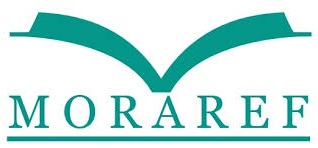Online Submissions
Already have a Username/Password for TRILOGI: Jurnal Ilmu Teknologi, Kesehatan, dan Humaniora?
Go to Login
Need a Username/Password?
Go to Registration
Registration and login are required to submit items online and to check the status of current submissions.
Author Guidelines
General Author Guidelines
- The Manuscript should be 4000-6000 words in length, written in Indonesian or English and should be original, unpublished and not under reviewed for possible publication in any other journals.
- The Manuscript may take the form of research, case studies, or literary studies.
- The manuscript submitted via website: https://ejournal.unuja.ac.id/index.php/trilogi/user/register
- The Manuscript should be prepared according to the following author guidelines and Template. The writing template can be downloaded here.
- Submitted manuscripts should have relevance and contribute something to three main topics of this journal (technology, health, and humanities studies). The manuscripts should include: 200 words of Abstracts (each in English and Indonesia), Introduction, Methods, Results & Discussions, Conclusion, and References.
Manuscript Structures
- Title. Use a concise and informative title in sentence case, with a maximum of 16 words.
- Affiliation. Provide the full postal address of each author’s affiliation, including the street name and number, city, ZIP code, and country.
- Abstract. Should consist of a single paragraph of no more than 200 words. Provide the background and objective of the paper, its principal results, and its conclusions. Avoid using abbreviations and citations.
- Keywords. Include a maximum of six keywords or phrases, arranged alphabetically and separated using semicolons (;). Use specific, relevant terms that do not appear in the title, so that the article is easier to find in search engines. Do not use terms that are too general or too long.
- Introduction. This section should briefly explain the background of the study, provide a short review of the pertinent literature, state the originality of the research, and state the research objectives. This section also covers the factual and actual problems, challenges, or requirements needed by community which related to the research purposes.
- Methods. Combine the methods and procedure used into one narrative passage. Enough information should be provided to enable repetition of the research. For commercial sources of the materials, the name of the company, and the town and country in which they are located should be indicated. Methods already published should be indicated by a reference, with only the relevant modifications described here; e.g. “Powder solubility was evaluated according to the method proposed by Smith (2000), with modifications. In the case of this study, powders were stirred in 25 mL of distilled water for 5 min using a blender.”; or “The powder solubility test followed the method of Smith (2000), with modifications in water volume. Powders were stirred in 25 mL of distilled water for 5 min using a blender.”
- Results & Discussion. Describe the outcome of the study. Data should be presented as concisely as possible, and in the form of tables or figures if appropriate, although very large tables should be avoided. This section should be an interpretation of the results of the work (not a repetition of them) in the context of previous research. Avoid excessive referencing of published literature. If needed, this section can be combined with the Results section into a Results and discussion section.
- Conclusions. The main conclusions of the study may be presented in a standalone Conclusions section or included as a subsection of the Discussion section.
- References. List all items alphabetically. Literature cited during the construction of the paper are included in the bibliography. For the purposes of efficiency and conciseness, avoid using more than 40 references and less than 10, consist of 70% journal references and 30% book references. Journal references should be at least 5 recent years, while book references. This journal uses an APA 6th Edition (American Psychological Association) format.
Copyright Notice
Authors who publish in TRILOGI: Jurnal Ilmu Teknologi, Kesehatan, dan Humaniora agree to the following terms:
- Authors are able to enter into separate, additional contractual arrangements for the non-exclusive distribution of the journal's published version of the work (e.g., post it to an institutional repository or publish it in a book), with an acknowledgment of its initial publication in this journal.
- Authors are permitted and encouraged to post their work online (e.g., in institutional repositories or on their website) prior to and during the submission process, as it can lead to productive exchanges, as well as earlier and greater citation of published work. (See The Effect of Open Access)
Privacy Statement
The names and email addresses entered in this journal site will be used exclusively for the stated purposes of this journal and will not be made available for any other purpose or to any other party.








.png)








